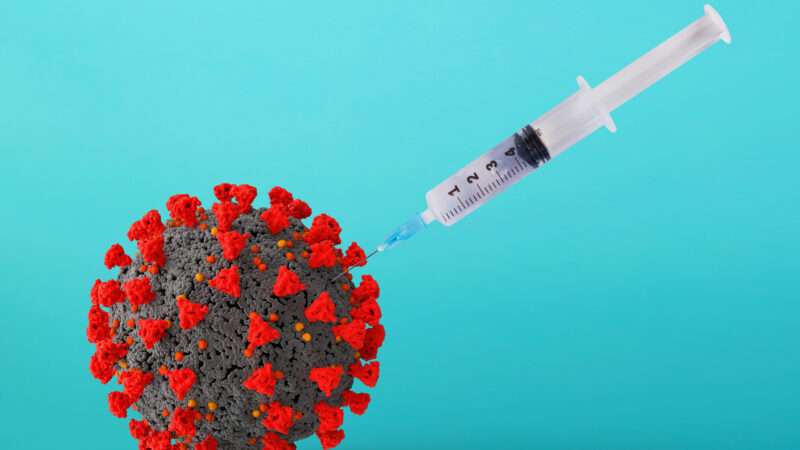
Cases of COVID-19 are again rising in much of Europe due to the spread of the BA.2 version of the omicron variant that appears to be 30 percent more infectious than its already highly contagious progenitor. And the Food and Drug Administration (FDA) is, as usual, way behind the trajectory of the coronavirus pandemic. Specifically, the agency has decided to take its sweet time again and only begin to consider next month the emergency use authorizations for further booster doses of the Moderna and Pfizer/BioNTech COVID-19 vaccines. By that time, a new wave of infections caused by the spread of the BA.2 version of the omicron variant will likely be cresting in the United States.
Let’s take brief look at the history of FDA dawdling. Based on preliminary positive results, Israel approved COVID-19 vaccine booster shots for its older citizens in July 2020. Taking those data into account, the Biden administration urged the approval of COVID-19 booster shots in mid-August. This plan apparently sparked “anger” among FDA bureaucrats who, according to Politico, feared that “political pressures will once again override the agency’s expertise.” Even as the delta variant wave of infections began rising in August, the agency’s experts finally got around to approving boosters for older Americans in late September. It took until late November for the FDA’s experts to authorize boosters for all adult Americans just as the omicron variant tsunami was taking off.
Health agencies are administering booster shots of the vaccines that were formulated back in 2020 when the original coronavirus variant was dominant. The good news is that when used as boosters those vaccines are still effective at preventing hospitalization and deaths from subsequent variants including the omicron variants. However, as the coronavirus virus evolves the vaccines are becoming less effective at preventing mild to moderate infections. It is notable that based on preliminary efficacy data, Israel began offering a second COVID-19 booster shot to its older citizens on January 3, 2022.
While the omicron variant is significantly more contagious than earlier variants and more easily spreads to both people previously infected with earlier variants and vaccinated people, it seems to have evolved such that it causes less severe illness. The risks of hospitalization and death from omicron variant infections are be lower than those stemming from earlier variants, but unvaccinated folks are still considerably more vulnerable to the worse outcomes of omicron COVID-19 infections. However, there is no guarantee that future COVID-19 variants will continue to become milder over time. The virus has plenty of scope for further evolution as it spreads among humans and many different species of animals including white tail deer.
Given how fast the COVID-19 virus mutates and spreads, a strategy of developing variant-specific vaccines is unlikely to forestall future waves of infections. For example, Pfizer announced on January 25, 2022 that it was launching a clinical trial of vaccine targeting the omicron variant. That was a week after omicron cases had peaked in the United States.
Way back in May 2020, three researchers at National Institute of Allergy and Infectious Diseases (NIAID) published an op-ed in Nature arguing that with respect to developing universal coronavirus vaccines “the time to start is now.” As it turns out, the time to start for the NIAID was 15 months later when the agency got around to awarding three academic institutions a little over $36 million to research pan-coronavirus vaccines in September 2021.
The Trump administration’s Operation Warp Speed could serve as a much better model for incentivizing pharmaceutical companies to greatly speed up the development and deployment of the candidate pan-coronavirus vaccines on which some are currently working. In a recent op-ed in the Los Angeles Times, two immunologists point out that the global cost of the COVID-19 pandemic is an estimated $16 trillion, compared to the cost of developing a typical vaccine at $1 billion. They note that even a $10 billion vaccine is minuscule compared with the pandemic’s toll.
Among the promising pan-coronavirus candidate vaccines are the Walter Reed Army Institute of Research’s spike ferritin nanoparticle COVID-19 vaccine; Osivax’s nucleocapsid vaccine targeting a protein widely prevalent among coronaviruses that is unlikely to mutate; and Inovio’s DNA vaccine encoding variant sequences of the spike proteins the virus uses to invade cells.
It’s way past time to focus on quickly developing and deploying pan-coronavirus vaccines.
The post Time for an Operation Warp Speed to Develop Pan-Coronavirus Vaccines appeared first on Reason.com.
from Latest https://ift.tt/SDXMpmx
via IFTTT